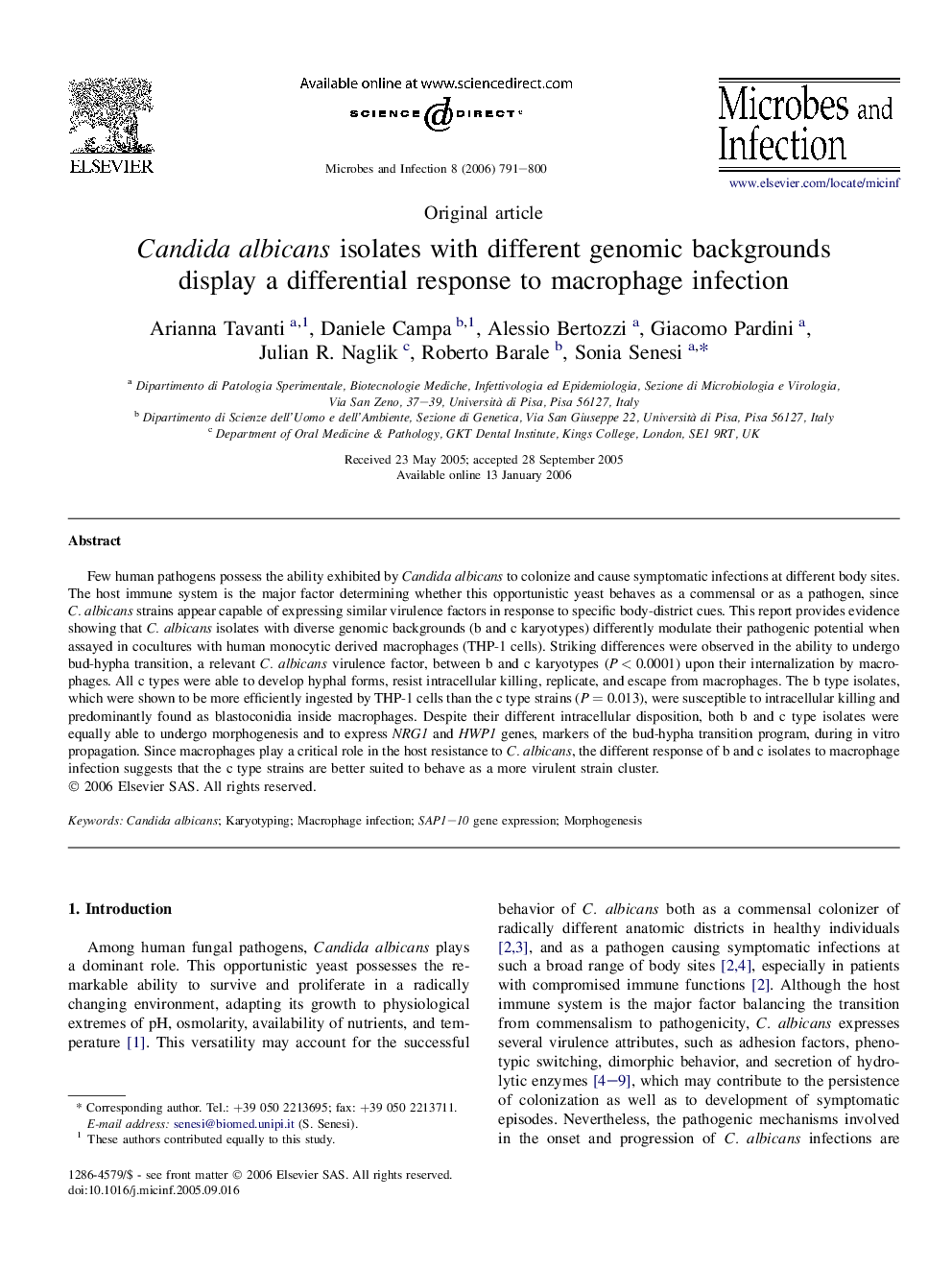| Article ID | Journal | Published Year | Pages | File Type |
|---|---|---|---|---|
| 3416173 | Microbes and Infection | 2006 | 10 Pages |
Few human pathogens possess the ability exhibited by Candida albicans to colonize and cause symptomatic infections at different body sites. The host immune system is the major factor determining whether this opportunistic yeast behaves as a commensal or as a pathogen, since C. albicans strains appear capable of expressing similar virulence factors in response to specific body-district cues. This report provides evidence showing that C. albicans isolates with diverse genomic backgrounds (b and c karyotypes) differently modulate their pathogenic potential when assayed in cocultures with human monocytic derived macrophages (THP-1 cells). Striking differences were observed in the ability to undergo bud-hypha transition, a relevant C. albicans virulence factor, between b and c karyotypes (P < 0.0001) upon their internalization by macrophages. All c types were able to develop hyphal forms, resist intracellular killing, replicate, and escape from macrophages. The b type isolates, which were shown to be more efficiently ingested by THP-1 cells than the c type strains (P = 0.013), were susceptible to intracellular killing and predominantly found as blastoconidia inside macrophages. Despite their different intracellular disposition, both b and c type isolates were equally able to undergo morphogenesis and to express NRG1 and HWP1 genes, markers of the bud-hypha transition program, during in vitro propagation. Since macrophages play a critical role in the host resistance to C. albicans, the different response of b and c isolates to macrophage infection suggests that the c type strains are better suited to behave as a more virulent strain cluster.
